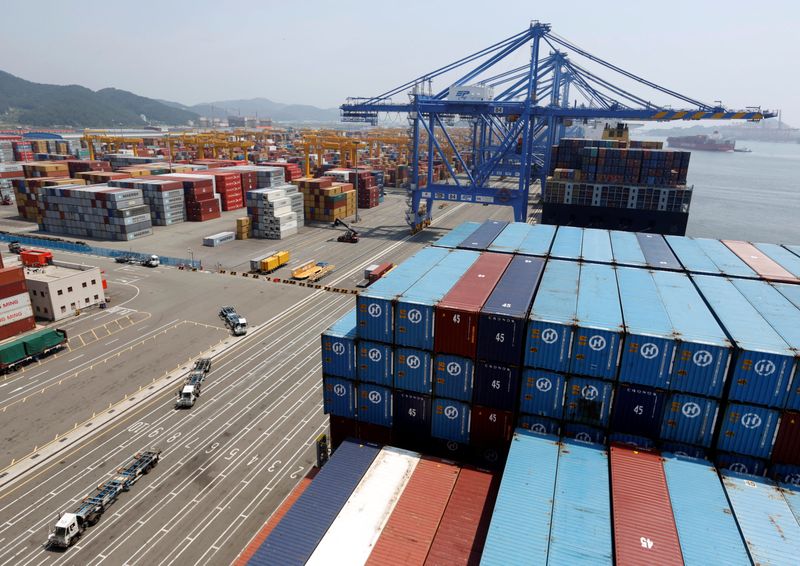By Jihoon Lee
SEOUL (Reuters) - South Korea's January export data will likely show an annual fall for a fourth straight month, with the pace of decline accelerating amid persistently weak demand from China, a Reuters poll showed on Monday.
Distorting calendar effects will be another reason for the weakness in the data, however.
Outbound shipments were likely 11.3% lower in January than a year earlier, compared with the 9.6% annual fall seen in December, according to the median estimate of 17 economists in the survey, which was conducted during Jan. 25-30.
The annual change in exports swung to negative in October. November's 14.1% fall was the greatest in 2-1/2 years.
"Both exports and imports are likely to remain in the doldrums for the time being, probably until the Chinese economy has reopened fully which could trigger a turnaround in the semiconductor cycle and/or a rebound in crude oil prices," wrote Oh Suk-tae, an economist at Societe Generale (EPA:SOGN).
The prices of semiconductors, which are among South Korea's biggest exports, fell heavily in the second half of 2022.
In the first 20 days of this month, South Korea exported goods worth 2.7% less than a year earlier. Shipments to China, South Korea's biggest trading partner, led the fall.
However, the Lunar New Year holiday suppresses economic activity in South Korea and China, and its timing shifts, distorting annual changes in data. This year the holiday was in January; last year it was in February.
South Korea likely imported 3.6% less in January than a year earlier, compared with the 2.5% annual fall seen in December, according to the survey. That would mark the fastest rate of fall since October 2020.
Altogether, the country is expected to post an 11th consecutive monthly trade deficit. The median expectation of economists in the survey was a $9.27 billion deficit, almost double the previous month's $4.69 billion and near August's record high of $9.43 billion.
Full monthly trade data is scheduled for release on Wednesday, Feb. 1, at 9 a.m. (0000 GMT).
The survey also found a median expectation that the consumer price index for January would be reported on Feb. 2 as 5.0% higher than a year earlier, the same as in December and November.
On factory output, economists estimated seasonally adjusted production had fallen 0.2% in December from November, when it was 0.4% higher than in the previous month. That data will be reported on Jan. 31.
